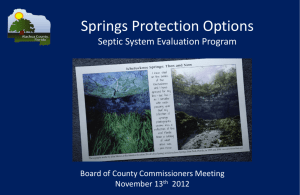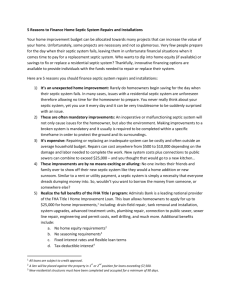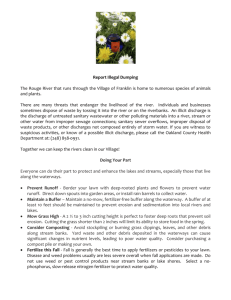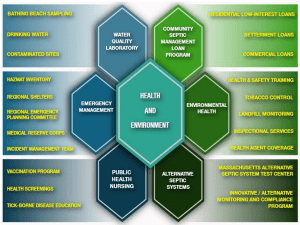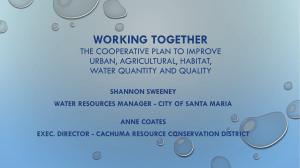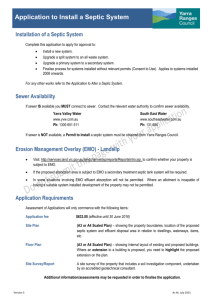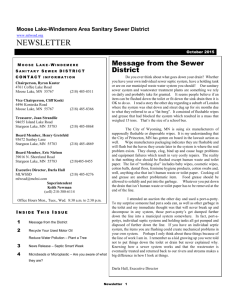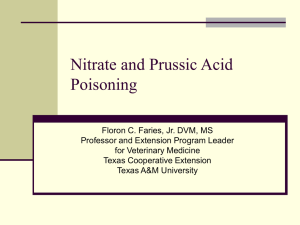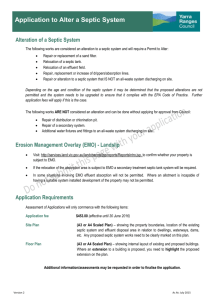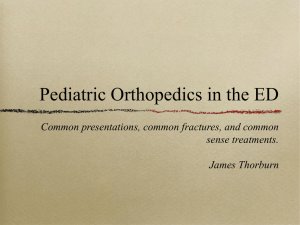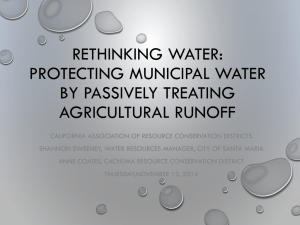Spanish Springs Valley Nitrate Remediation Pilot Project
advertisement
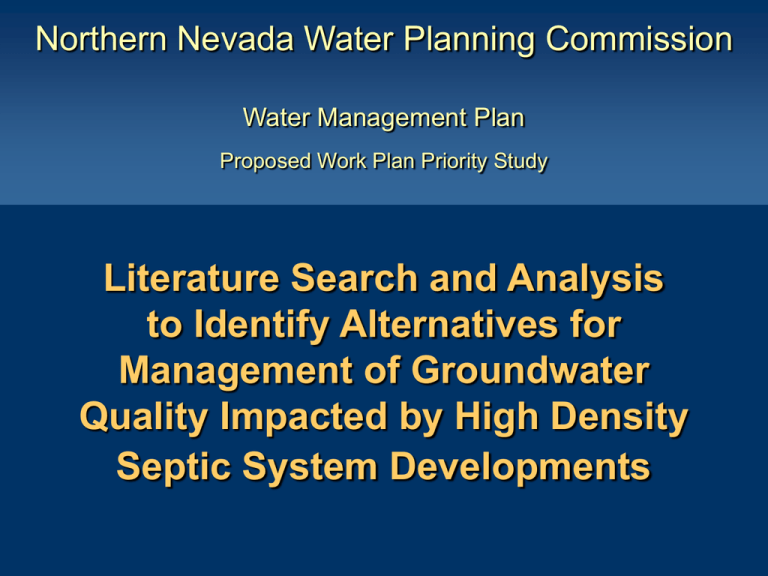
Northern Nevada Water Planning Commission Water Management Plan Proposed Work Plan Priority Study Literature Search and Analysis to Identify Alternatives for Management of Groundwater Quality Impacted by High Density Septic System Developments Background: Nitrate Nitrate-N MCL is 10 ppm Dose not bind with soils Is highly soluble & travels with groundwater Little or no retardation or degradation Conservative solute that tends to accumulate in ground water Background: Septic Systems 18,000+ septic systems in Washoe County Extensive work in Spanish Springs links septic systems to ground water contamination Other areas exhibit similar potential Background: Previous Studies Verdi: 1935, 1951, & 1985 studies link septics to ground water contamination Lemmon Valley: nitrate increased from 4 to 13 mg/L over ten years Golden Valley: “pervasive spreading” of nitrate contamination in 10 yrs Cold Springs: nitrate risen above MCL in shallow groundwater over 10 years Washoe Valley: septics the source of nitrate contamination of shallow ground water Spanish Springs: maximum of 82 mg/L Background: Presentation Previous OutlineStudies RWPC Sponsored The Septic Nitrate Baseline Data and Risk Assessment Study Phase 1: Prioritization of Study Areas and Assessment of Data Needs by Christian Kropf, 2007 Identify areas potentially affected by septic nitrate effluent Investigate the potential risk of contamination in these areas Prioritize these areas for further study Project Areas Final Rankings Report Conclusion Data Gaps What’s Presentation Being Done Outline Now? Currently we are using septic to sewer conversion as our main management/mitigation tool in Spanish Springs. Problems: Cost to extend infrastructure to affected parcels without external funding source Cost to affected property owner can be significant Mandate to mitigate groundwater nitrate without enforcement to see it trough to completion What Management/Mitigation Presentation Outline Measures have been Considered? Septic to sewer conversion Septic system management programs Small flow systems De-nitrifying septic systems Leachate collection system to TMWRF Leachate collection system to package plant Composting toilets What Presentation Now? Outline The Kropf report has identified that a septic nitrate contamination problem exists and has identified areas which are being, or may need to be mitigated Washoe County DWR has moved forward with septic to sewer conversion program in Spanish Springs at a significant cost which is not likely to be sustainable for future phases. We need a study to evaluate the cost effectiveness of potential alternatives which could be implemented locally to manage/mitigate nitrate contamination from septics Proposed Evaluation Presentation Outline 1. Literature search to identify the following methods: • • • • • Technologies Practices Management techniques Regulatory frameworks Funding and financing strategies, including: i Cost of technology, practice, etc., O/M ii Financing alternatives such as assessment districts, development fees, grants and loans Proposed Evaluation 2. Evaluate method impacts to: • Existing services (e.g., Water Reclamation Facilities, interceptor capacity) • Septic owners • Development community • Community at large • Regulatory agencies, codes and regulations; (grandfathered parcels “entitled” to septics) Proposed Evaluation Presentation Outline Project deliverables would include: • • • • • A description of technologies with references Impacts to property owners, community and municipal services Financing options Case studies (specifically of measures that could be implemented locally) Cost Benefit Analysis of methods employed (as they relate to current local conditions) Request for Qualifications Presentation Outline • Work Plan Priority • Included in budget • Staff Evaluation Team • Qualified firms for consideration would need understanding of both local conditions as well as national trends in addressing septic related water quality issues. Presentation Outline QUESTIONS?
